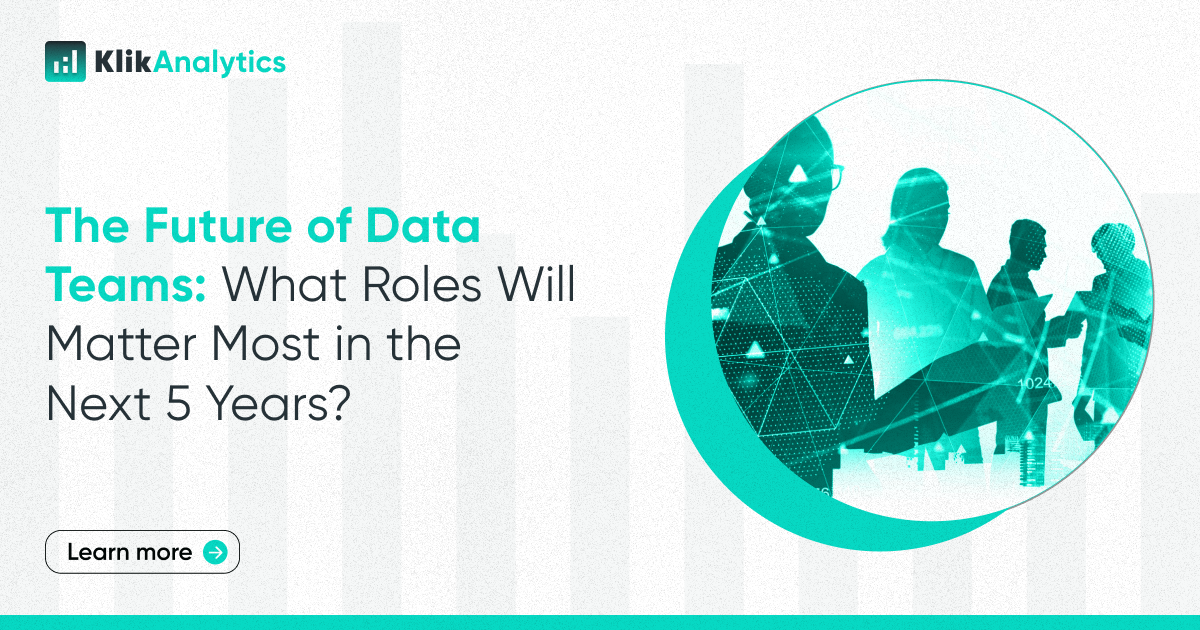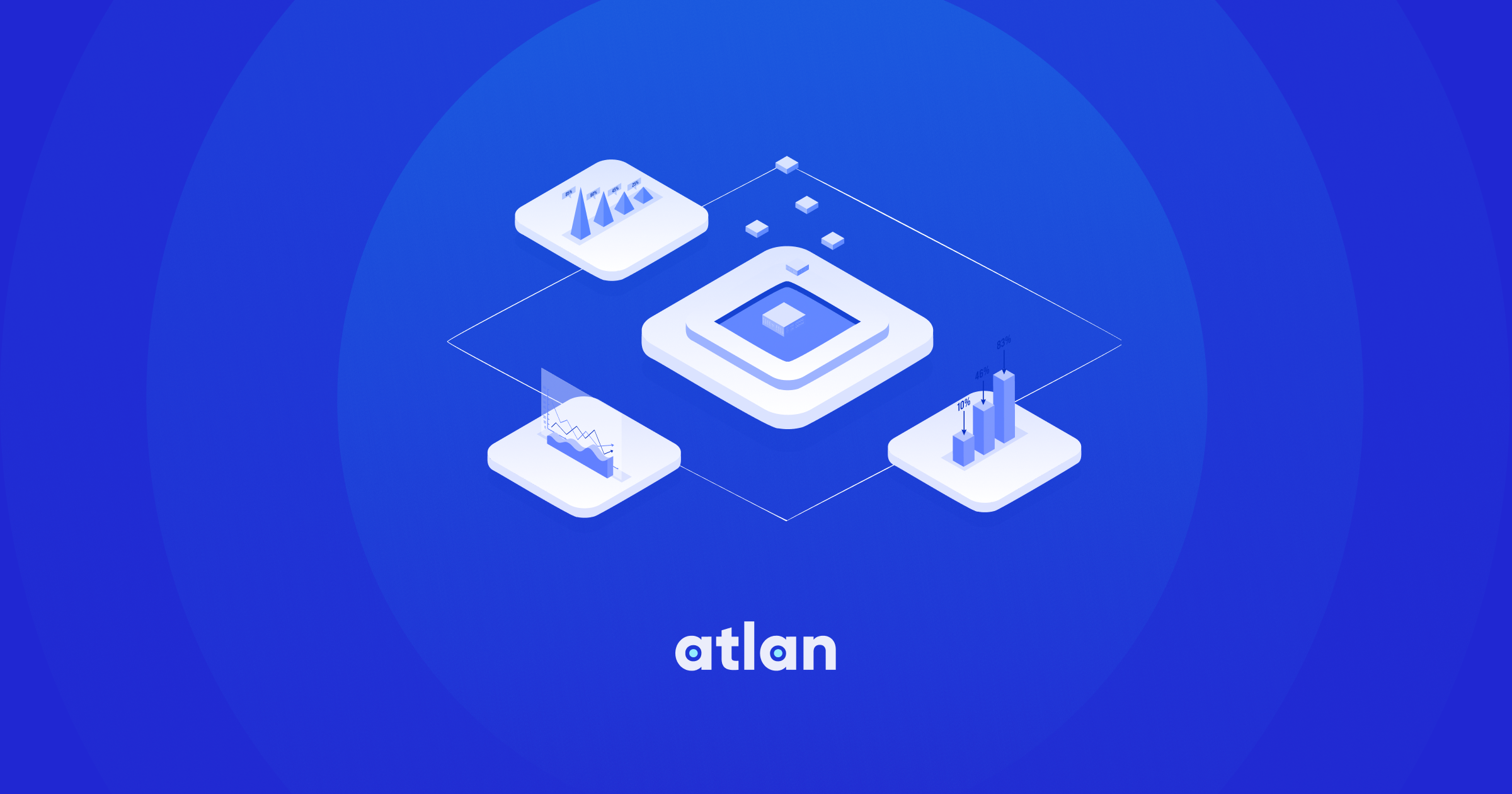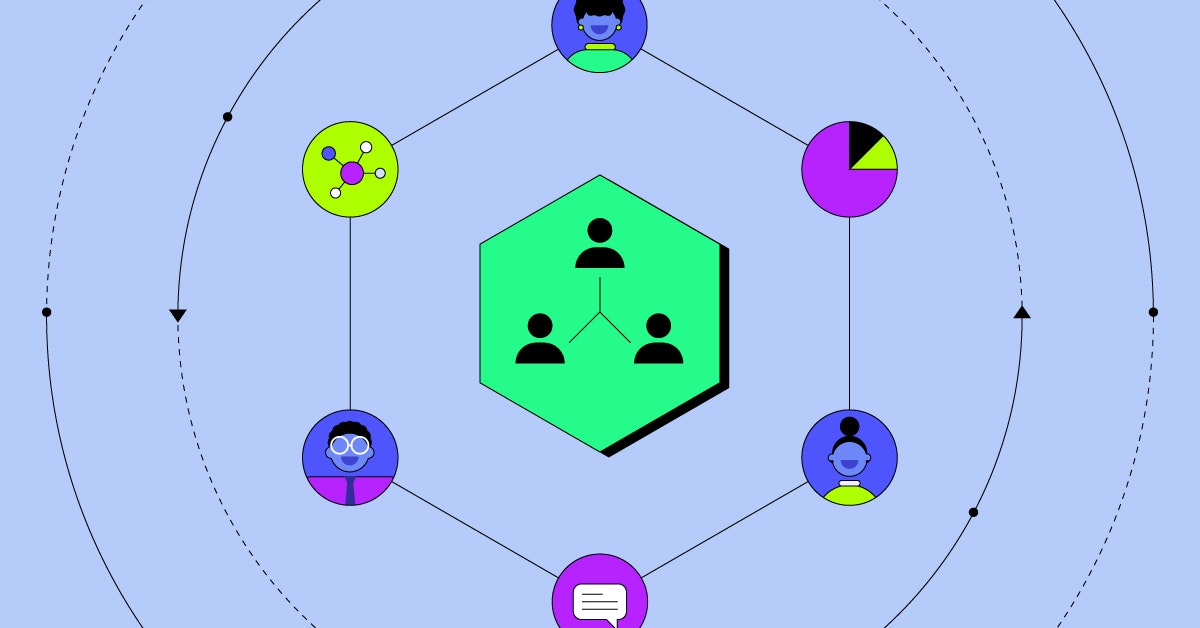How Will Data Teams Look Like in 2030?
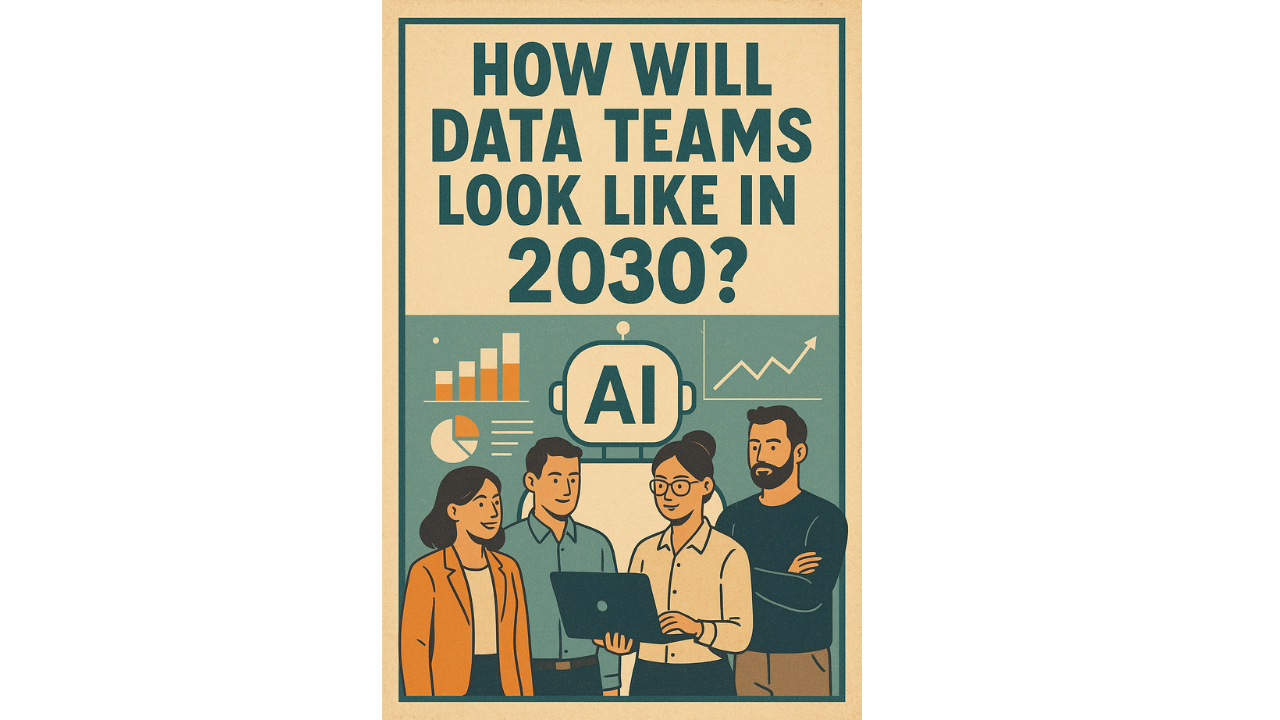
A. How does data team look like today?
When I took my first role in a data team, I was working alongside my consultant and supporting a group of clients, and my job was to curate datasets, often turn them into a report, and draw insights from the report to help my clients make decisions. A blend of dashboarding, automating, advanced analytics and storytelling with data piqued my interest in data analytics and there has been no looking back. Having gone through a range of data roles, I always think about the data team compositions with AI changing the scope of roles so much.
Data teams are a major component of an organization, especially in today's world, where decisions are only taking using curated information and well-defined procedures. Reports, KPIs and dashboards have become omnipresent, and these are made possible through data teams. With evolutions in eras, things change, requirements change and past seems irrelevant. However, I have always believed in organic evolution. What would seem irrelevant in the future is not because it was irrelevant in the past - there are a lot of different factors which govern the market. In this blog, lets look at these factors.
Structure of data teams, even today, is not driven through a thumb rule. A lot of organizations have struggled, and tested different strategies for the composition of data teams. What works for one also might not work for the other. Before we move ahead, lets look at different types of data roles and types of data teams.
Types of data roles today:
- Data/BI analyst - responsible for curating insights from data
- Data engineer - creating data products and pipelines to make an analyst's job easier
- Platform lead/architect - designing data platforms, ingestion frameworks and systems and governance
- Data scientists - build models to predict and prescribe
- Analytics engineers - model data for data analysts and scientists and build semantic layer
- Data product owners - own and manage datasets as products and apply governance on that
- Data governance lead - policy definition, documentation, compliance and completeness
Here is a twist - even today, you do not often need all of these roles sitting into a data team. One person can play multiple roles or sometimes based on the maturity of the setup, you might not need one or more of these well defined roles. Therefore, it is often said in the data world - more than the title, its the actual work that matters.
B. Types of data teams:
Centralized - a centralized data team caters to all the stakeholders and functions. In more mature setup, centralized teams are very common across organizations.
Decentralized - data employees are a part of each of the function and they cater to that specific function.
Federated models - a mix of both. This setup is costly and is less common across organizations.




C. What is driving the change?
Let me begin with a personal story. Recently, one of my business stakeholders reached out to me asking for some analysis on data in a short turnaround time. I provided the analysis to her, framed the storyline, and in addition, also provided the backend data too so that she can dig into the data if needed. She appreciated the analysis, but she wanted to dig further into the data to connect some of the dots quickly. Hence, she used the data extract I provided to uncover further insights. This is a classic example of citizen data science - wherein a person with no background of analytics or statistics utilize and leverage these skills on the fly to get things done. How will these citizen data scientists be produced? There are two ways:
- Simplest way is training and empowerment of the people onto these skills and platforms
- The less simple but more sustainable way is to make analytics easier for the stakeholders - the key is "accessibility"
#2 is where most companies are today betting on. Analytical platforms such as PowerBI, ThoughtSpot, Tableau are launching embedded analytical platforms which allow the business users to extract insights easily. For ex: ThoughtSpot's Sage, Tableau Next, Databricks AI/BI Genie, and PowerBI co-pilot are some examples of such solutions. These are big players, but there are also niche players which have entered the market with a single focus goal. For ex: Pyramid Analytics, Julius.AI, and others entered the market with a focus of making analytics easier, and are increasing in terms of adoption. These products have wrapped and in some cases, fine tuned LLM models to empower the analysts/business users to ask the questions in plain language, which is then converted into actions for the tool, which then produces visualizations or report.
This concept is beautiful, but still a bit immature. I will write a separate blog on the maturity of the GenBI platforms as per my experiences. Coming back to the original topic, these GenBI solutions are here to disrupt the ways of working. In fact, the concept of GenML (which I have been trying to promote for sometime now) will take things at the whole other level.
As GenBI tends to help the users create visualizations from the natural language, GenML would allow the users to create predictive models through the natural language. Data scientists would always be against the idea of things not being in their hands (for ex: model tuning, what if GenML does something wrong, how can I trust the statistical significance, etc.) and they are not wrong. Both GenBI and GenML are the concepts that need the expert's hands on top -
- for validation of the results &
- to support the stakeholder whenever needed (you don't know when the hallucinations might become frustrating 😄)
The short answer of what is changing is - "ease of doing analytics".
D. Structure of data teams tomorrow
Driving Forces: Data teams of tomorrow will change significantly, not just simply because of AI making analytics easier, but also because of maturity of solutions available. Data analysts or business intelligence engineers will still be highly relevant to make sense of the data and structure the insights, however, teams will become leaner. In most models even today, teams have actually become quite lean in my experience because of overall organic growth of skillset. Also - the maturity of skills has led to data analyst performing data engineering tasks (at least to some extent) and in many cases data science tasks too.
In future, teams will become leaner. The overall cost pressures will also drive this change as at the end of the day, analytics is an enablement function and not the core business critical function of the org. I think of it in this direction:
Cost of producing insights = team cost + platform cost + engineering cost + cloud costs
The overall cost pressures are shifting the market to produce insights with less cost on one hand. At the same time, the pressure to train and adopt AI is also increasing overall budgets of the analytics teams to perform and scale proof of concepts and get ahead in the game.
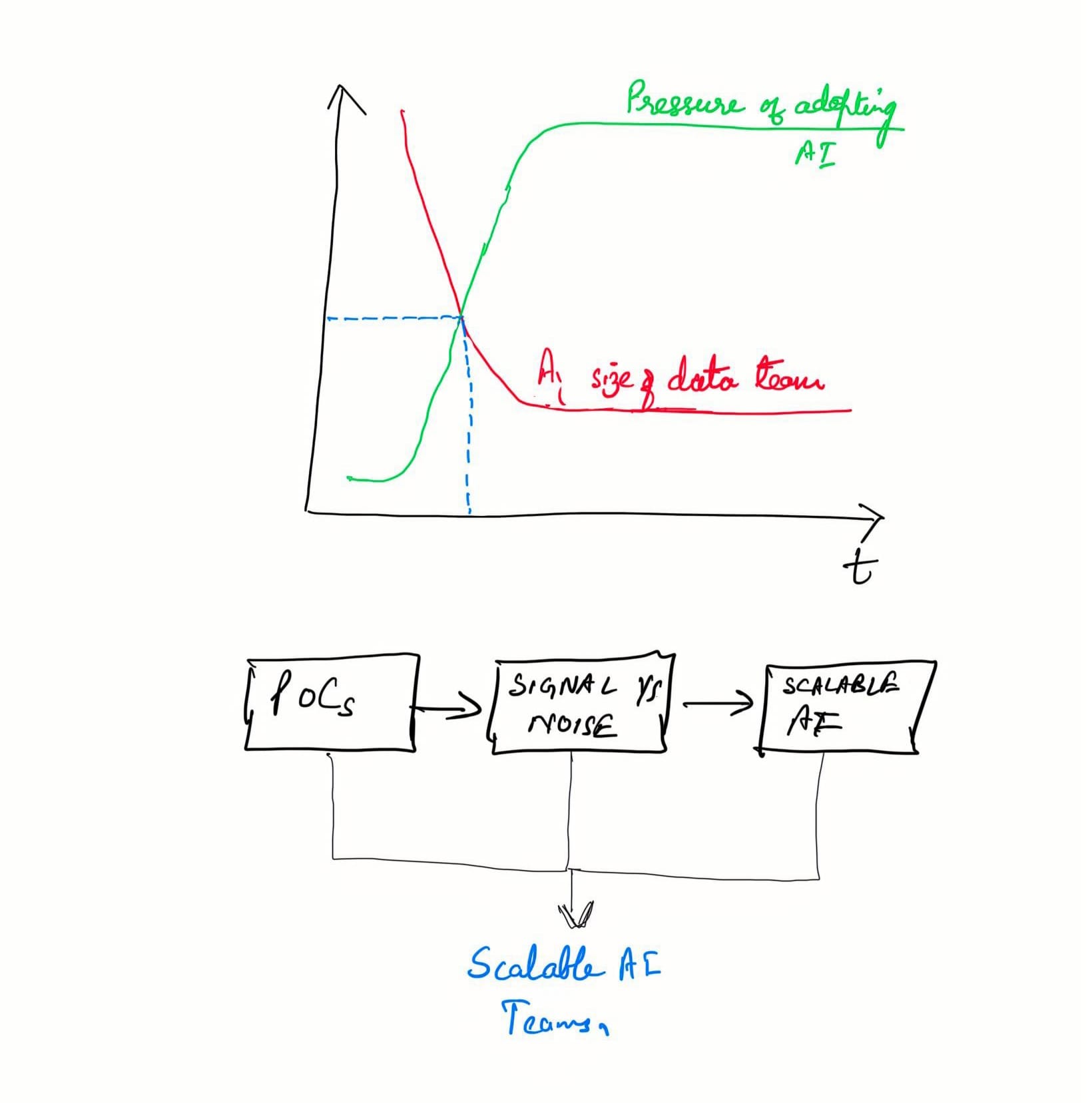
These two macro-economics will reach an equilibrium in the next few years, which will shape the way the teams are currently structured.

New roles: In addition to the standard data roles today, teams will expand the horizon by incorporating other roles too as the markets are re-shaping themselves:
Data Storytellers – Experts who bridge the gap between data and decision-making by turning complex insights into compelling narratives that inspire action.
AI Ops & Automation Engineers – Professionals who ensure AI systems run reliably at scale, automating workflows, monitoring model performance, and maintaining data pipelines in production.
Prompt Engineers – Specialists who craft and optimize prompts to get the best outputs from large language models, blending creativity, logic, and domain expertise.
Citizen Data Science Trainers – Educators who empower non-technical professionals to use data tools and AI responsibly, enabling wider adoption of analytics across the organization.
Ethical AI Officers – Guardians of responsible AI use who develop policies, oversee fairness and transparency, and ensure models comply with ethical and regulatory standards.

The above diagram is not set in stone but just an illustrative setup of a data team of the future.
New roles will open up the market, and analytics professionals would need to re-think their niche - what they enjoy and what drives them.
Conclusion
We don't be nervous because of AI. We need to engage with it - trust me its not scary. Engaging with AI does not restrict to building a RAG application or writing a code that automates something. Engaging with AI means knowing what is coming in the market, thinking how it can be utilized in our day to day work and beyond. It also means being critical of AI and comparing what alternatives exist. When I look at any AI solution, I always ask a relatively tough question to myself - why should I use this? What is the real upside? What are the alternatives?
AI and other market forces will change things for the better in future, and the preparation for such a change is also pretty exciting and fun.
References:
